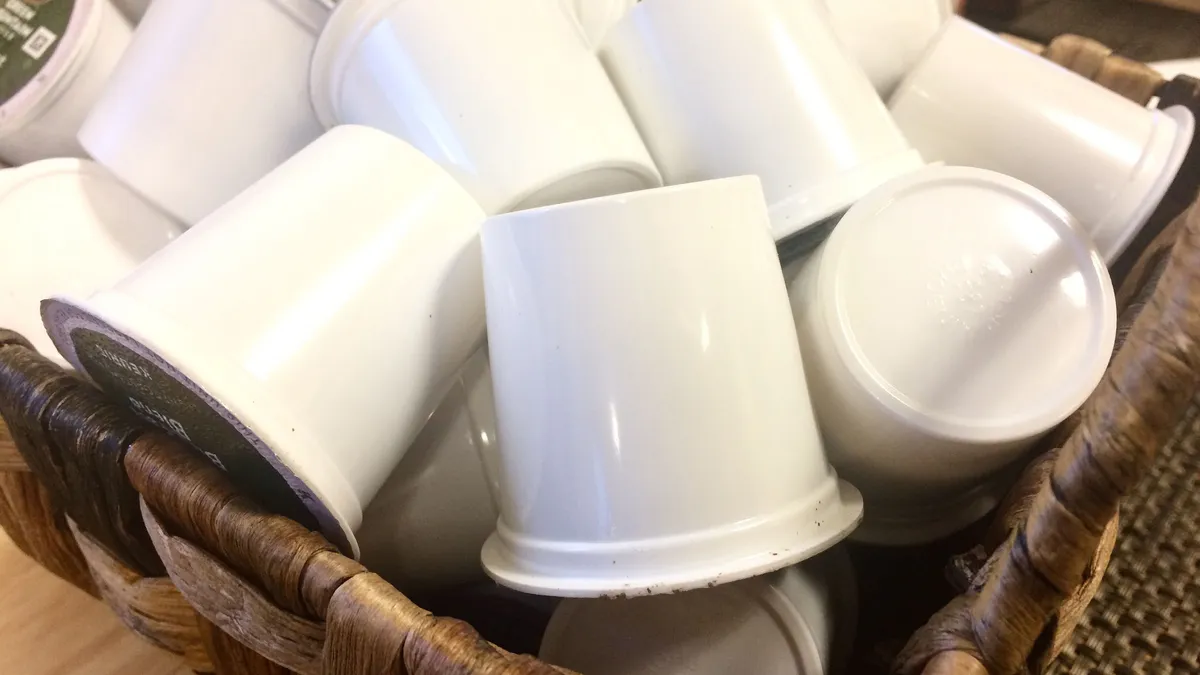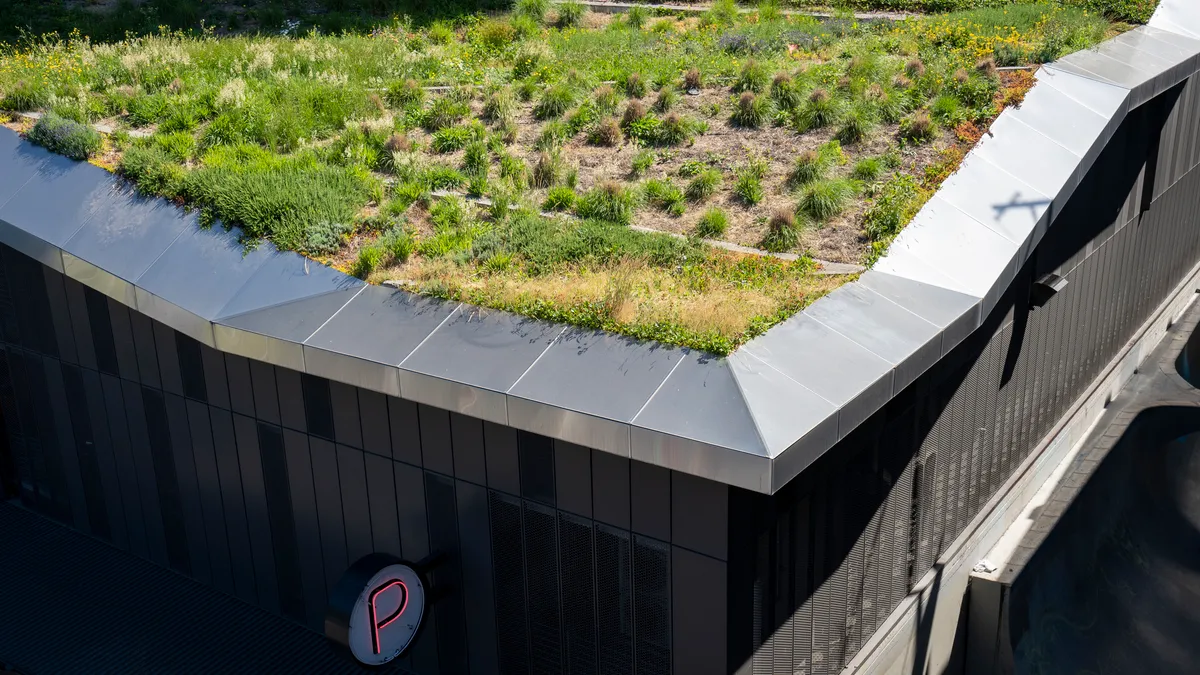Dive Brief:
- Keurig has set a goal of making its K-Cup coffee pods recyclable by 2020 and switching them from a polystyrene blend to polypropylene currently looks like the way to do it. So far, the company has tested these new pods at eight material recovery facilities and 90% of them made it through to the container line.
- During a recent WasteExpo session, Ali Donahue, an environmental and sustainability engineer for the company, said they tracked this by putting RFID chips in each pod before sending them through facilities. She noted that results were directly linked to the age of equipment and number of optical sorters.
- The Sustainable Packaging Coalition recently named Keurig a 2017 Innovator Award Winner for Breakthrough Process based on its success with the MRF study. Full traceability, non-disruptive testing and in-depth data capture were all cited as the main factors.
Dive Insight:
Keurig, one of the largest coffee pod manufacturers, has faced pressure over the sustainability of its products and the reality of its 2020 recycling goal. In recent years, they have joined both the Closed Loop Fund and The Recycling Partnership to become more engaged with the infrastructure. Donahue described the results from Keurig's MRF tests, conducted last year with Resource Recycling Systems, as vindicating for the company.
"All of these results are very exciting to us because we have been told that it can’t be done, you can’t recycle a K-Cup, and here we are," she said.
Some recyclers thought that the pods might get mixed into the 2-inch minus stream, or that the small paper liners inside would become a contaminant. So far Donahue said none of this had been a notable issue, in part because Keurig worked with the industry to develop its new packaging.
Steve Alexander, executive director of the Association of Plastic Recyclers, gave Keurig an unprompted commendation for their approach during a conference session on the "limits of recycling." He said it was a refreshing change from the usual scenario of companies making new products and expecting recyclers to figure out what to do with them.
"They’re talking about an industry infrastructure change in order to try to capture their type of container in the marketplace," said Alexander. “They’ve taken on an issue that goes far beyond them."
Pursuing the use of polypropylene for small containers, and additional optical sorters to help detect them, could open up a number of possibilities. It may also influence how other coffee pod manufacturers approach their own recycling plans. Nespresso has moved toward using aluminum, and offering special curbside collection for the pods in select European markets.
While some of the new polypropylene pods are already on the market, consumer access to them may vary and Keurig is still working to convert its production process. Donahue told Waste Dive that the company plans to be sparing with its consumer recycling education in the meantime until the new pods are more widely available.
“We have a lot of production facilities and pack lines," she said. "It’s not just an overnight thing."












